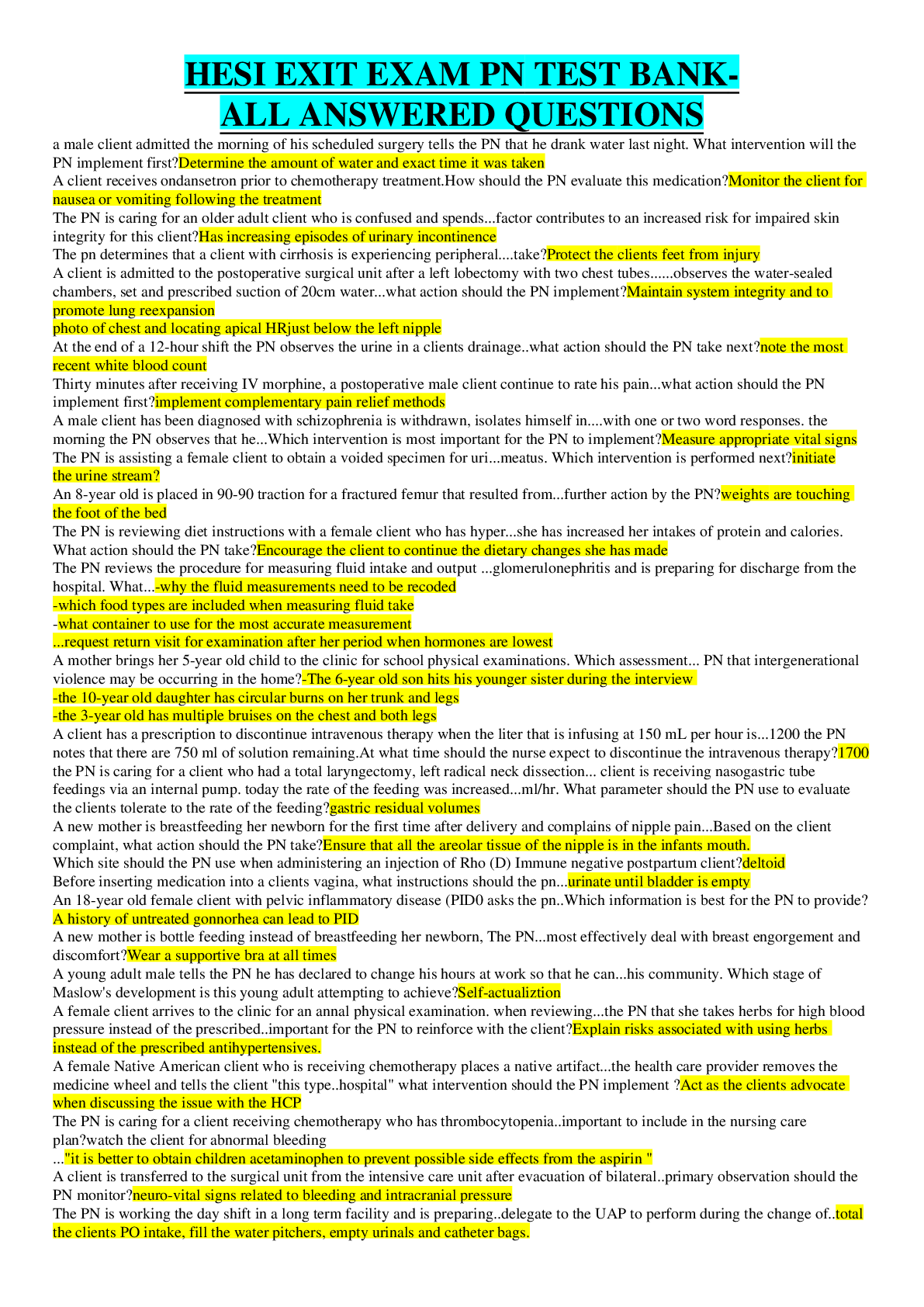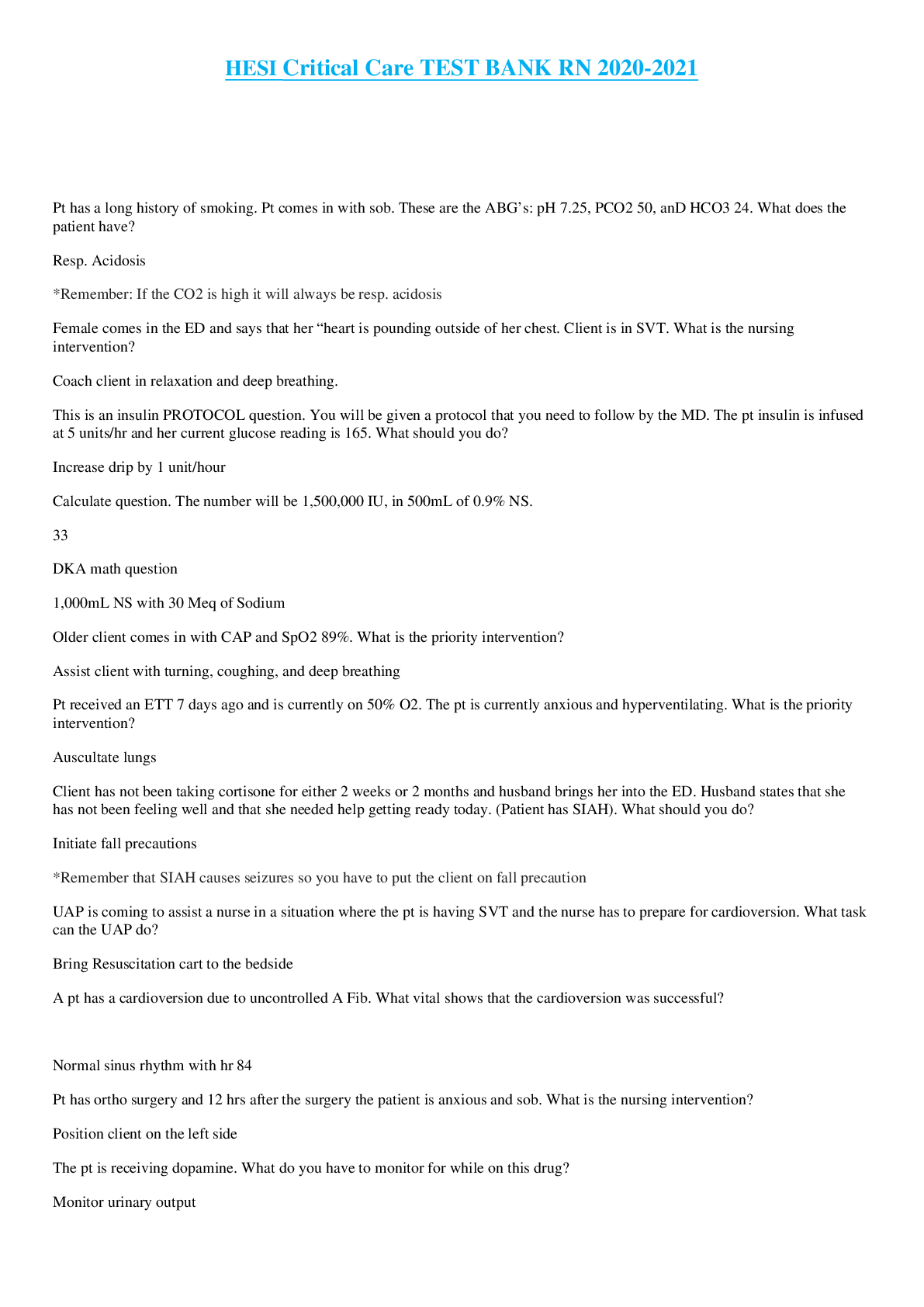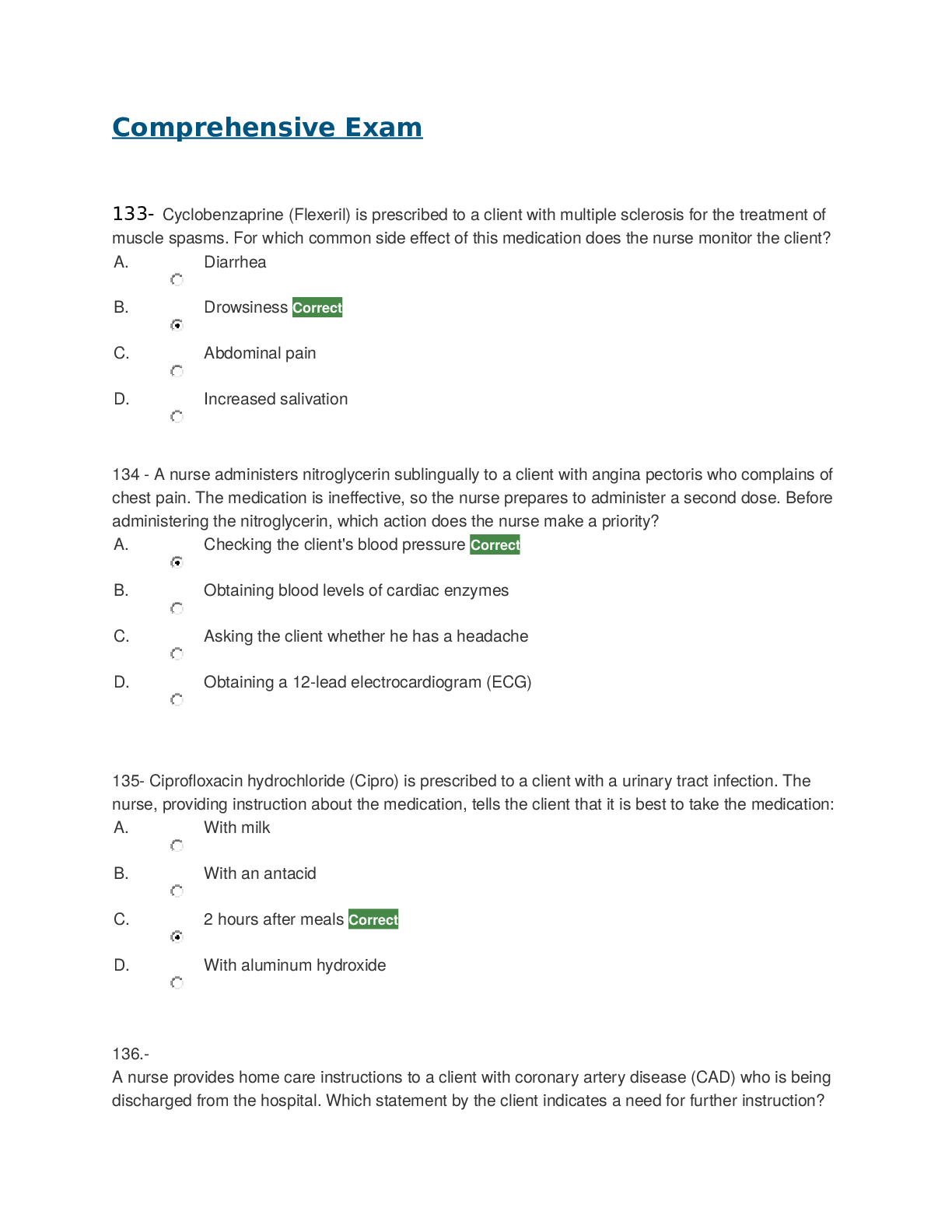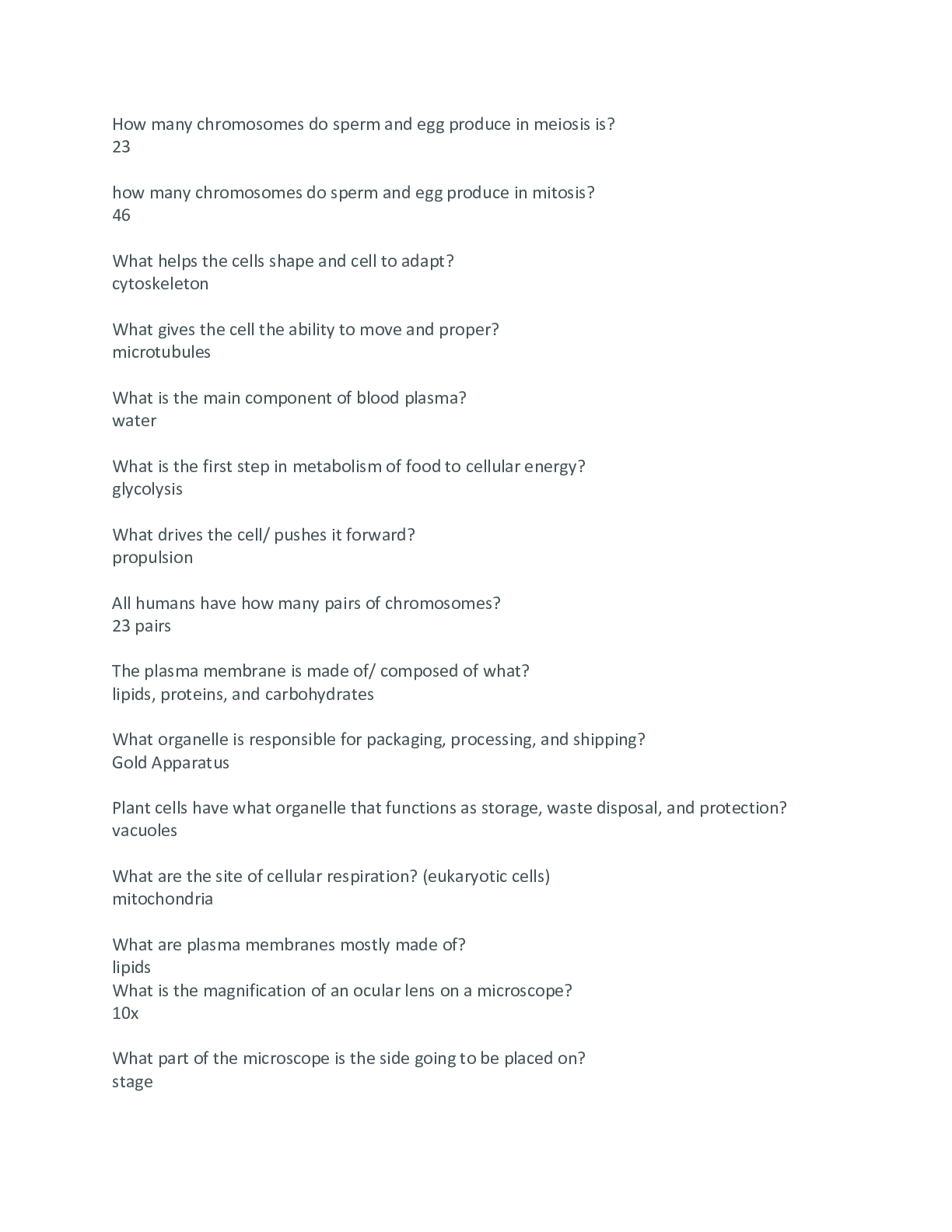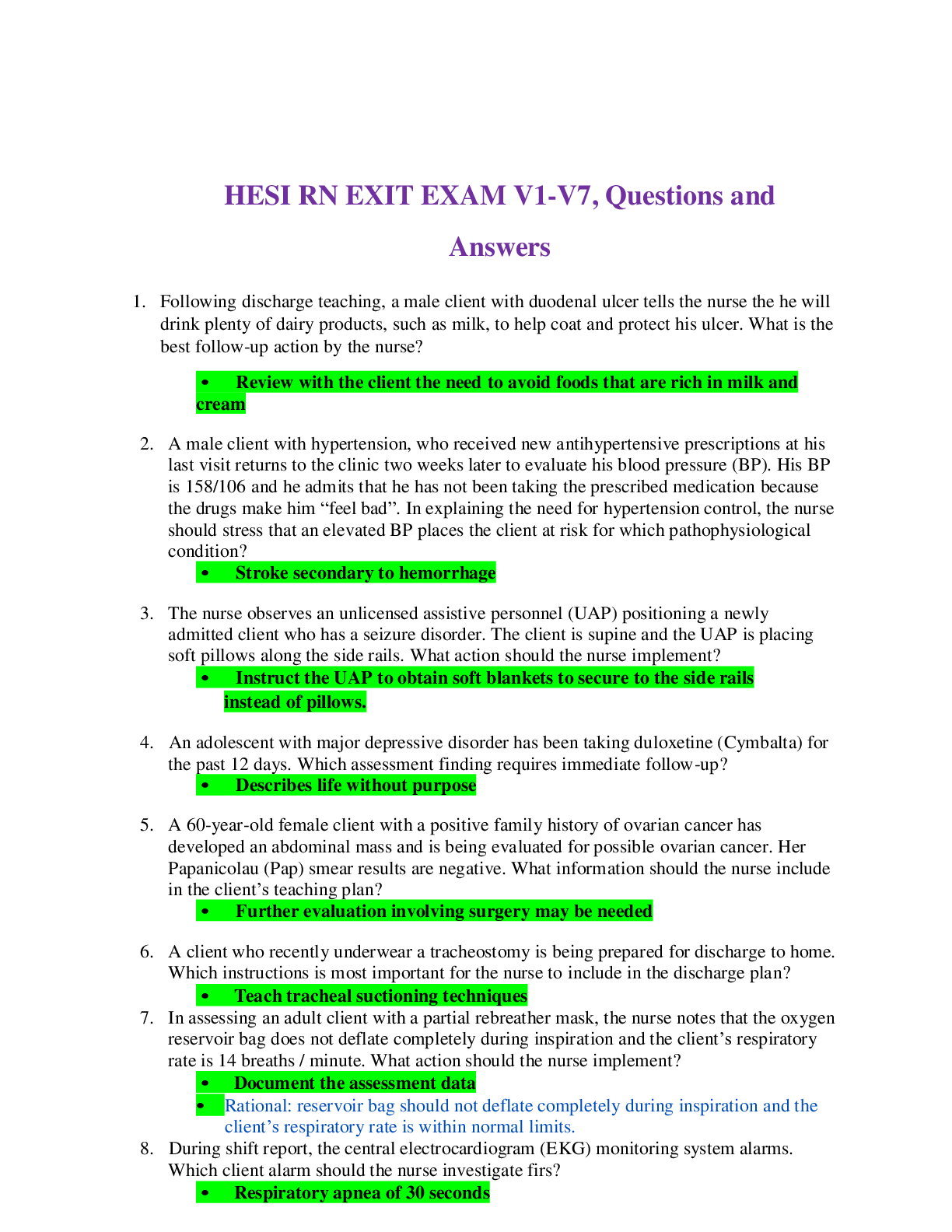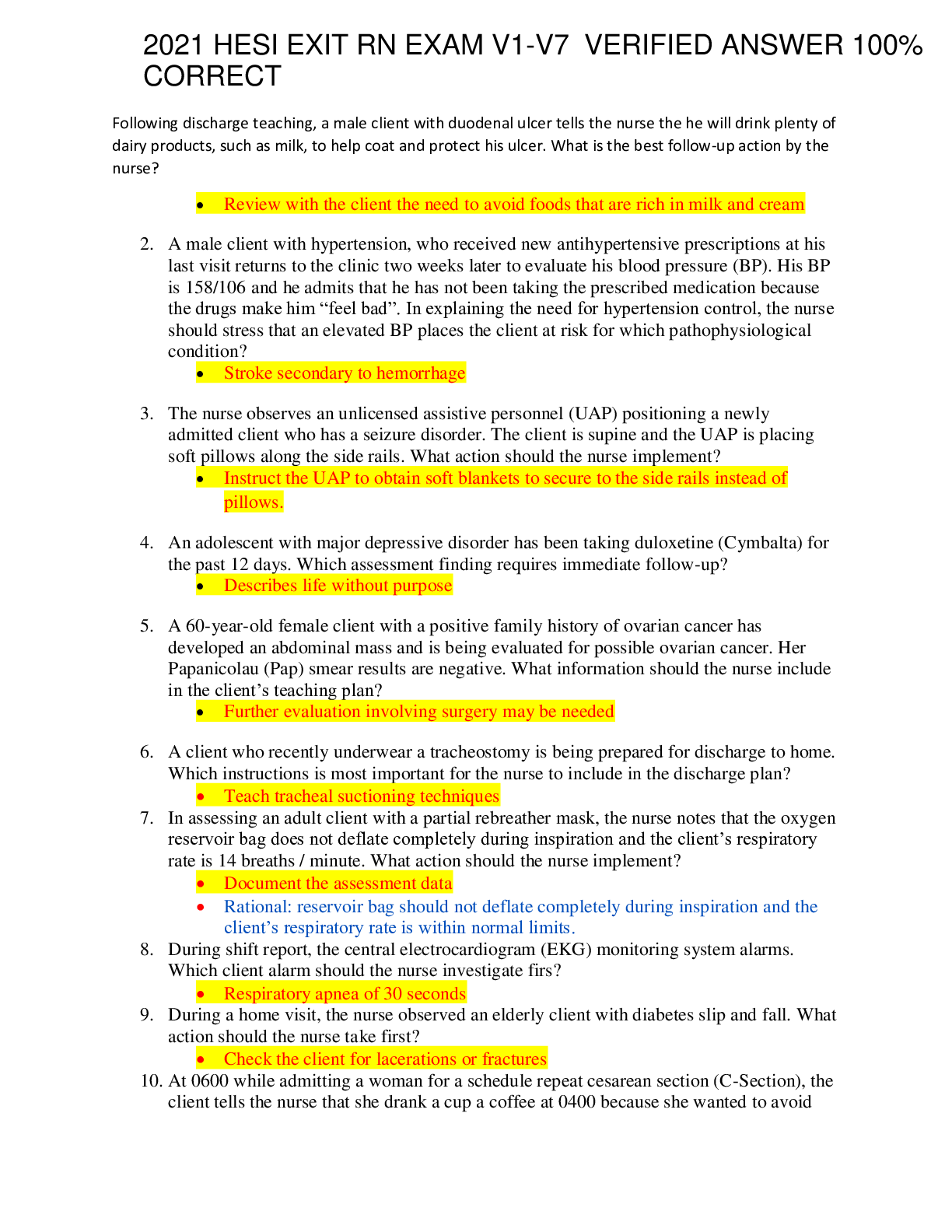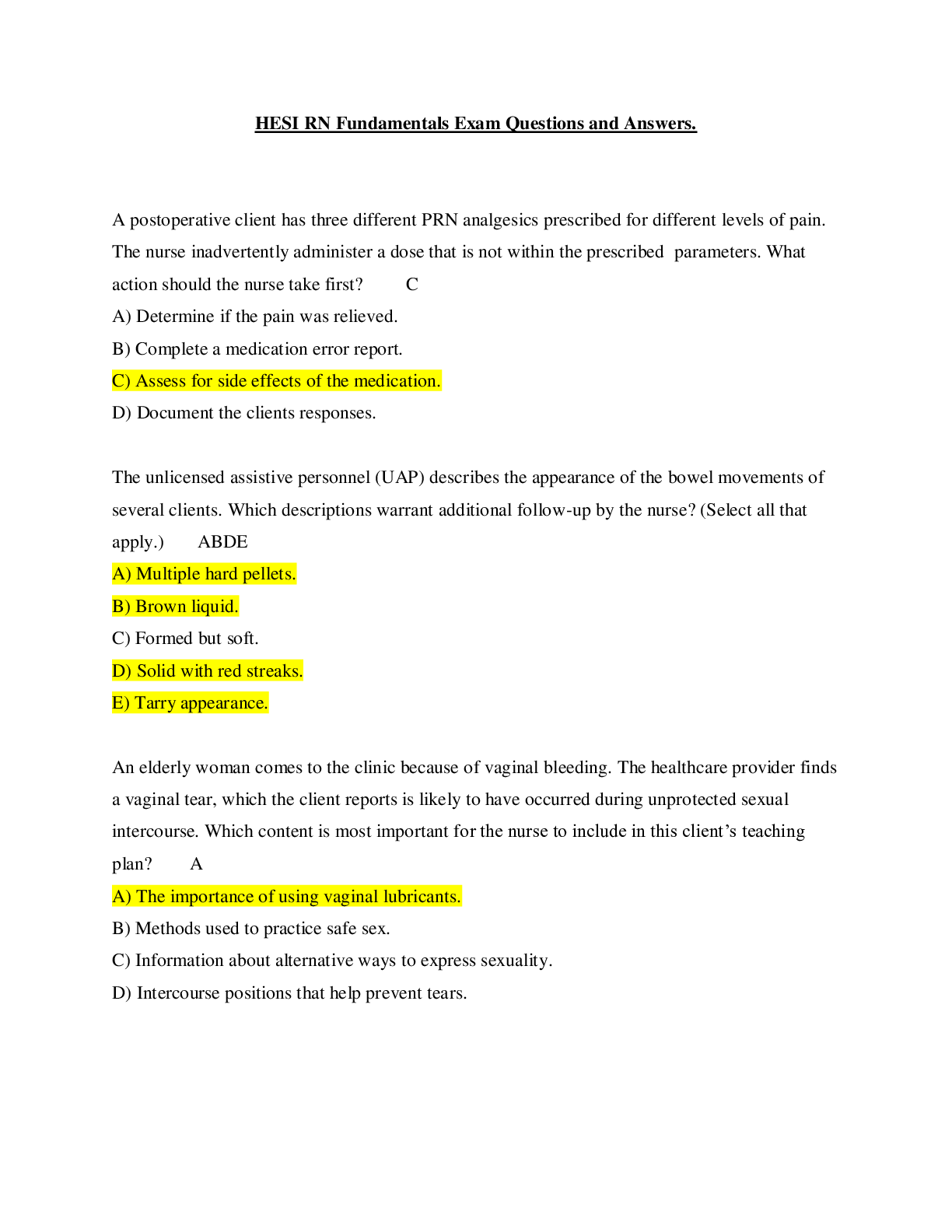HESI PRACTICE EXAM 3 PHARMACOLOGY
Document Content and Description Below
A client with mild parkinsonism is started on oral amantadine (Symmetrel). What statement accurately describes the action of this medication? dopamine in central nervous system is increased A 52-ye... ar-old client is admitted to the hospital for possible duodenal ulcers. The healthcare provider prescribes ranitidine hydrochloride (Zantac) 150 mg BID PO. Which data would indicate that this medication is effective? Within 4 hours after meals, the client denies having pain. A 78-year-old client with congestive heart failure receives the cardiac glycoside digoxin (Lanoxin) 0.25 mg PO daily. Which observation by the nurse indicates that the medication has been effective? Clear breath sounds anteriorly and posteriorly Minocycline (Minocin) 50 mg every 8 hours is prescribed for an adolescent girl diagnosed with acne. The nurse discusses self-care with the client while she is taking the medication. Which teaching points should be included in the discussion? (Select all that apply.) Report vaginal itching or discharge. Protect skin from natural and artificial ultraviolet light. Avoid driving until response to medication is known. Use a nonhormonal method of contraception if sexually active. The nurse is assessing a stuporous client in the emergency department who is suspected of overdosing with opioids. Which agent should the nurse prepare to administer if the client becomes comatose? Naloxone hydrochloride (Narcan) The healthcare provider prescribes captopril (Capoten) 37.5 mg. The medication is available in 25 mg tablets. What should the nurse administer? 1½ tablets A client who is HIV positive is receiving epoetin (Epogen) for management of anemia secondary to zidovudine (AZT) therapy. Which laboratory finding is most important for the nurse to report to the healthcare provider? Hematocrit (HCT) of 58% A 75-year-old male client taking hydrochlorothiazide (HCTZ) is admitted to the hospital having "palpitations" and "skipped heart beats." What is the most likely cause of these symptoms given the client's medication history? Hypokalemia Which parameter is most important for the nurse to check prior to administering a subcutaneous injection of heparin? A. Heart rate B. Urinary output C. Activated partial thromboplastin time (aPTT) D. Prothrombin time (PT) and international normalized ratio (INR) C. Activated partial thromboplastin time, commonly referred to as aPTT Rationale: The laboratory value that measures heparin's therapeutic anticoagulation time is the aPTT (C). (A) should be checked before the administration of digoxin. (B) is valuable information but not a parameter measured for heparin therapy. (D) is evaluated during anticoagulation therapy using sodium warfarin (Coumadin). A client is prescribed a cholinesterase inhibitor, and a family member asks the nurse how this medication works. Which pharmacophysiologic explanation should the nurse use to describe this class of drug? Improves nerve impulse transmission In developing a nursing care plan for a 9-month-old infant with cystic fibrosis, the nurse writes a nursing diagnosis of Alteration in nutrition: less than body requirements, related to inadequate digestion of nutrients. Which intervention would best meet this child's needs? Give pancrelipase (Cotazym-S) capsule mixed with applesauce before each meal. When providing client teaching about the administration of methylphenidate (Ritalin) to the mother of a child diagnosed with attention-deficit/hyperactive disorder (ADHD), what instruction should the nurse include in the teaching plan? Offer the child the medication before eating breakfast and after eating lunch. Alteration of which laboratory finding represents achievement of a therapeutic goal for heparin administration? Partial thromboplastin time The charge nurse is reviewing the admission history and physical data for four clients newly admitted to the unit. Which client is at greatest risk for adverse reactions to medications? A. 30-year-old man with a fracture B. 7-year-old child with an ear infection C. 75-year-old woman with liver disease D. 50-year-old man with an upper respiratory tract infection A. 75-year-old woman with liver disease [Show More]
Last updated: 1 year ago
Preview 1 out of 69 pages
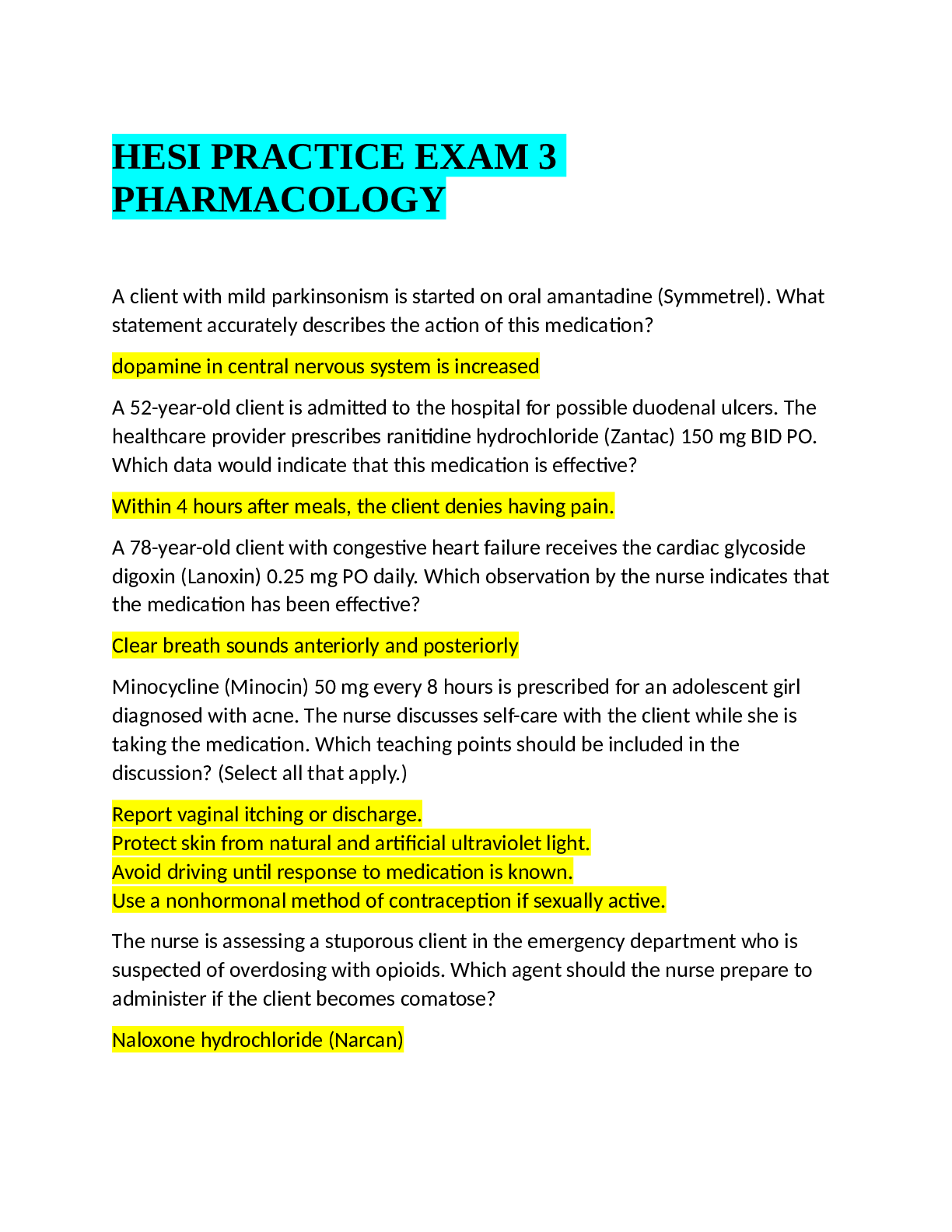
Reviews( 0 )
Document information
Connected school, study & course
About the document
Uploaded On
Nov 23, 2021
Number of pages
69
Written in
Additional information
This document has been written for:
Uploaded
Nov 23, 2021
Downloads
0
Views
52

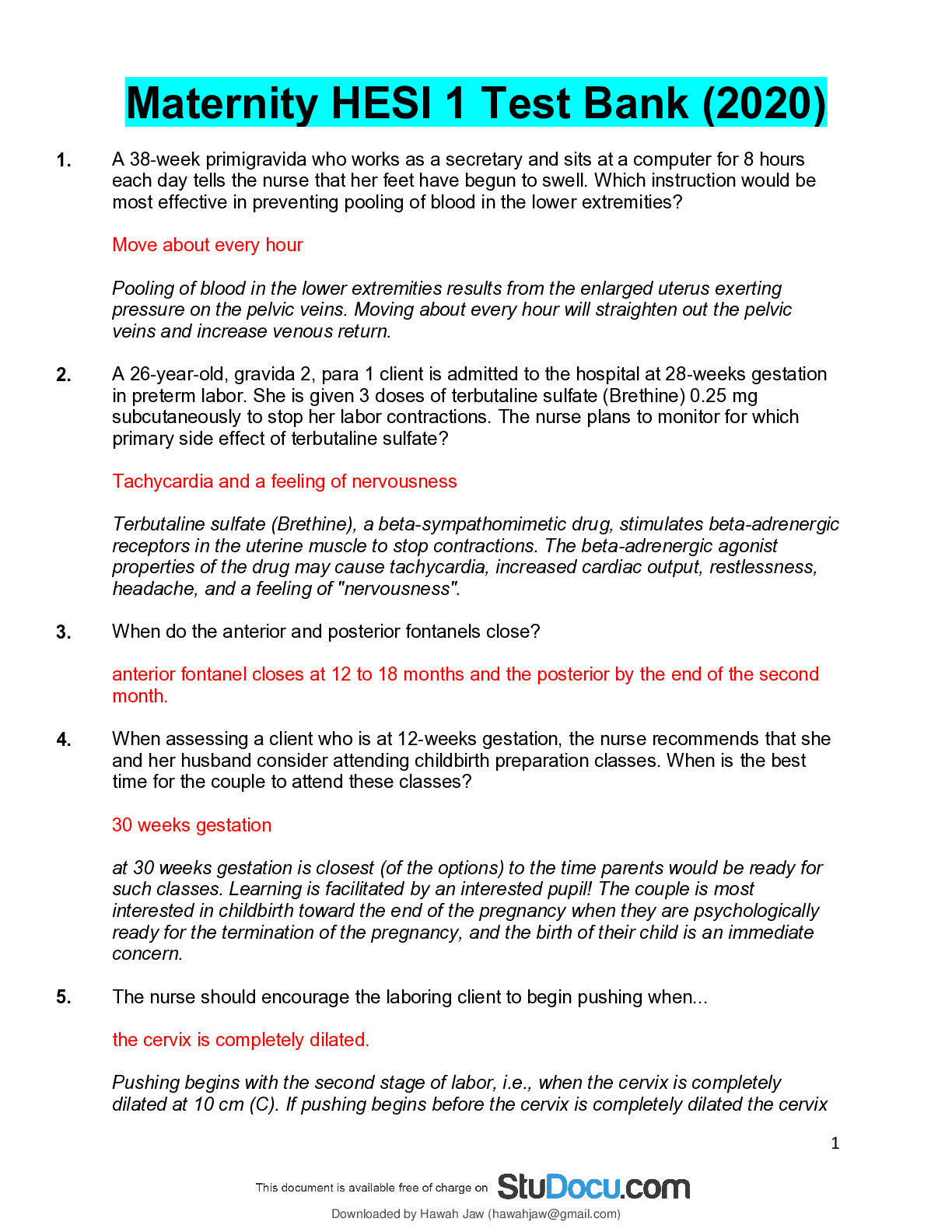

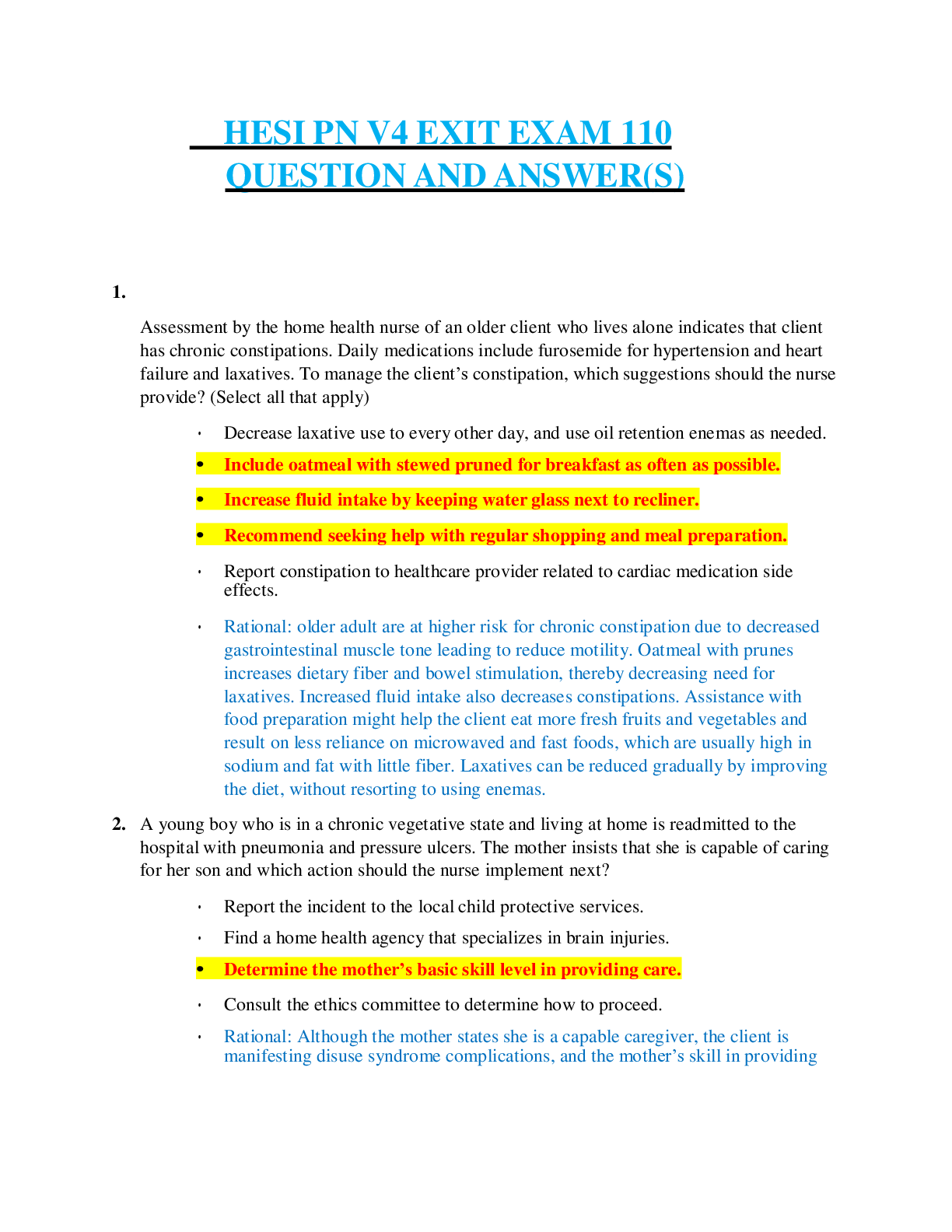
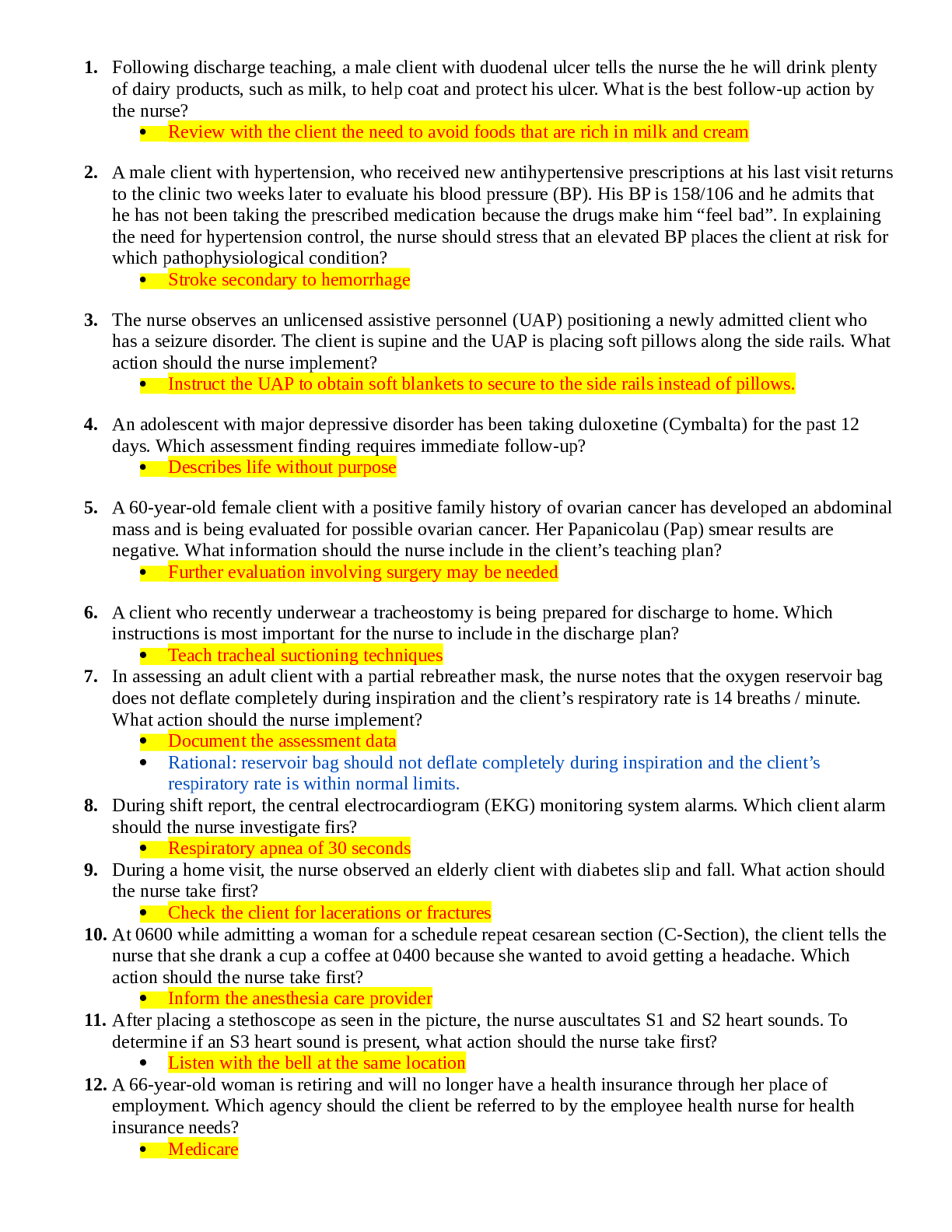
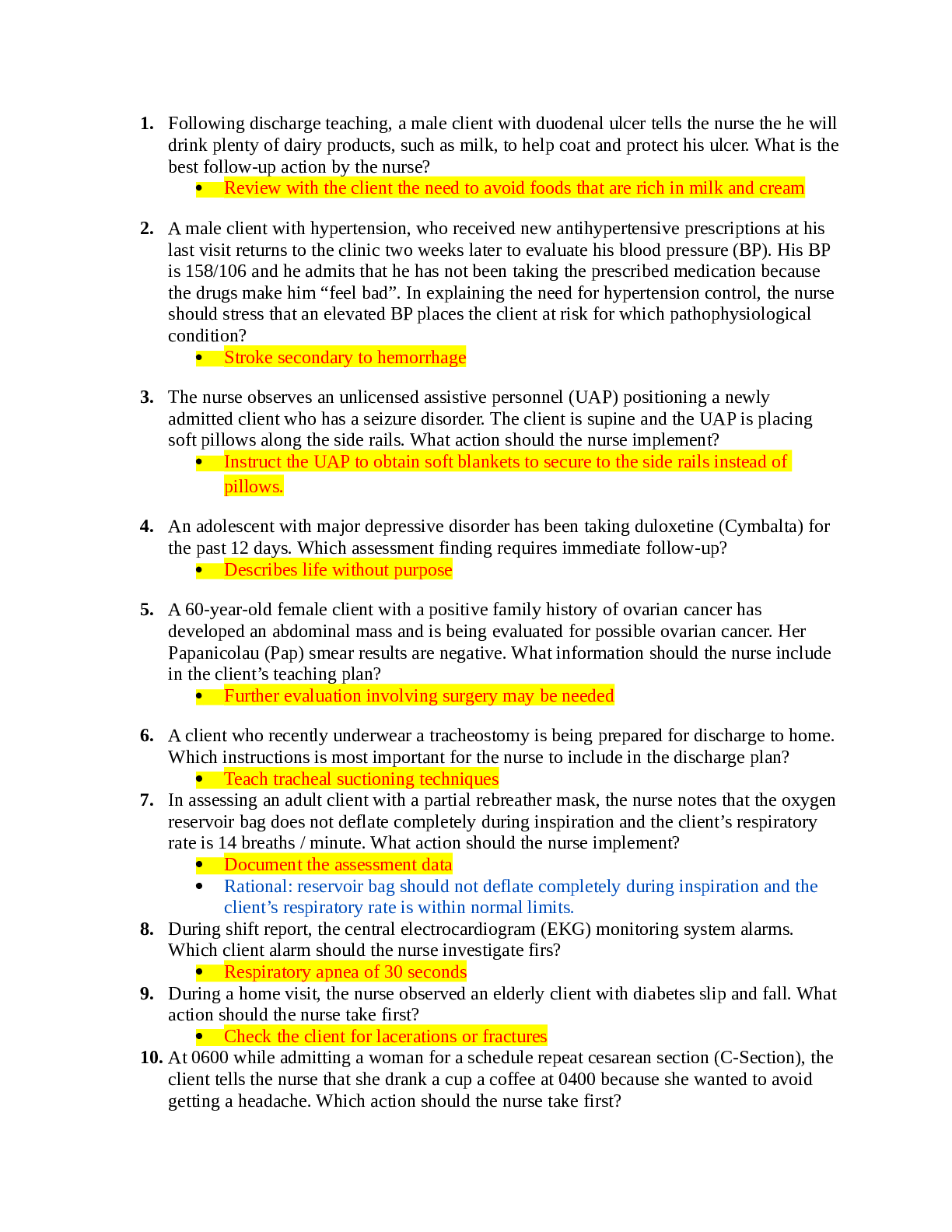

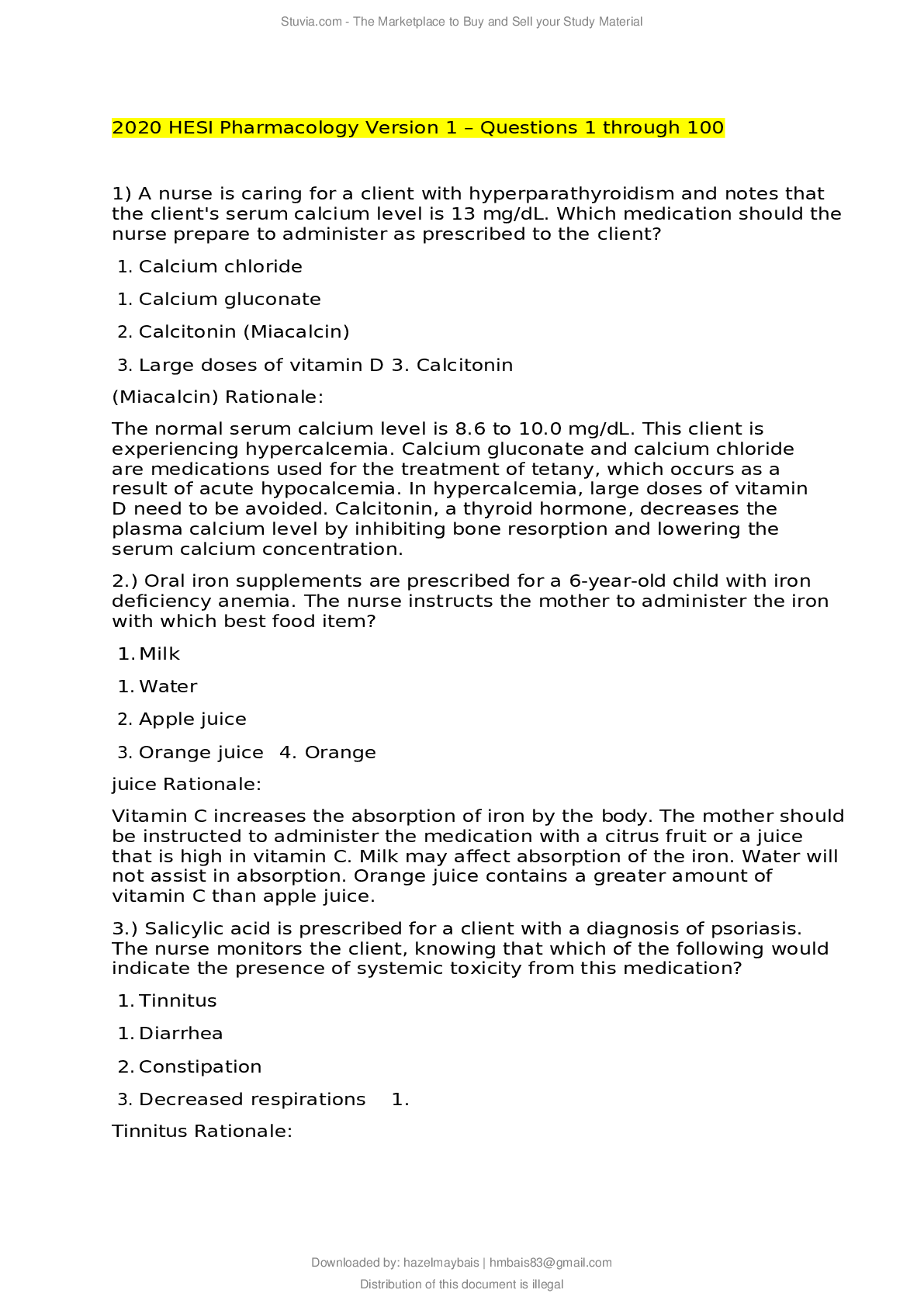
_removed.png)
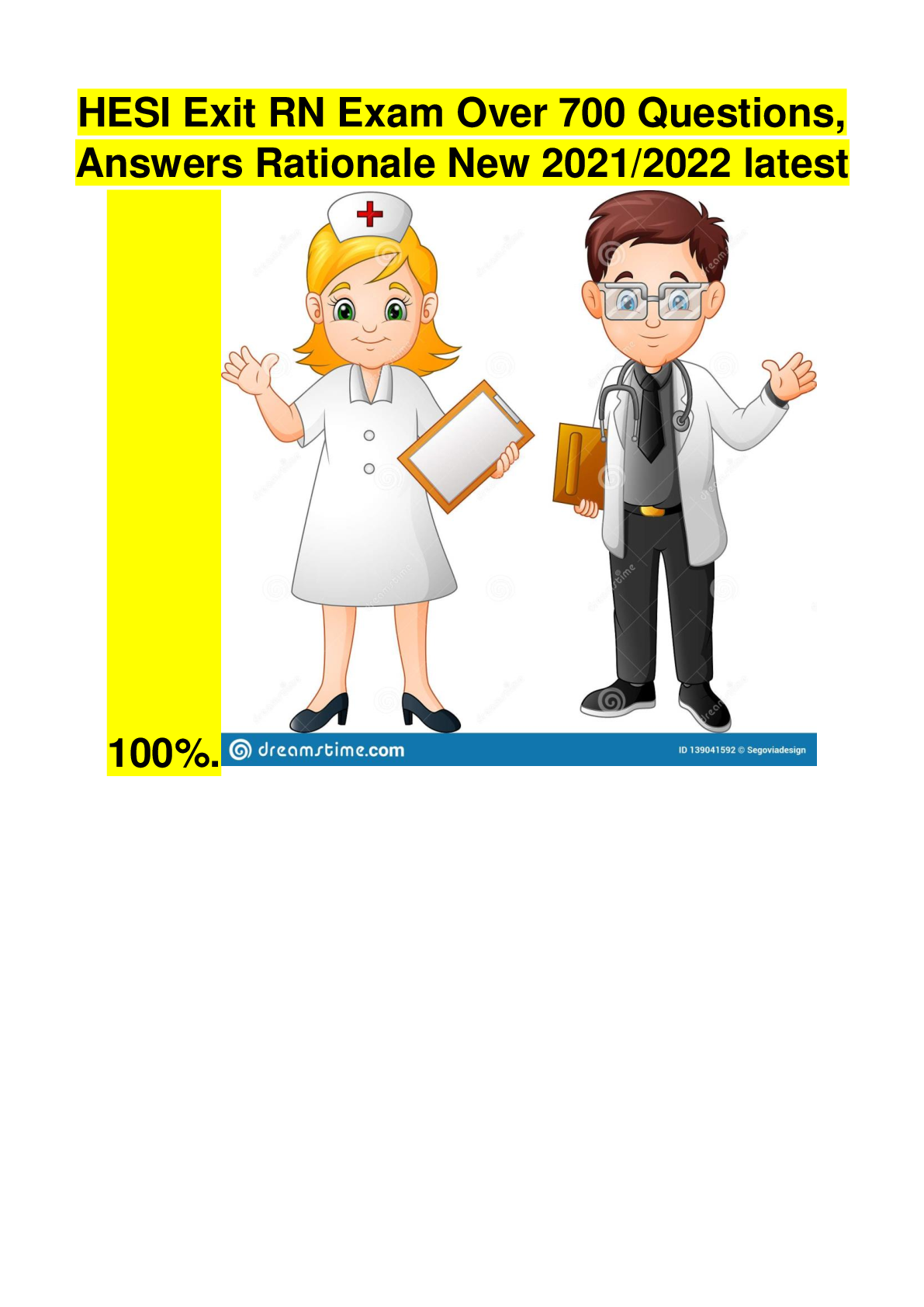
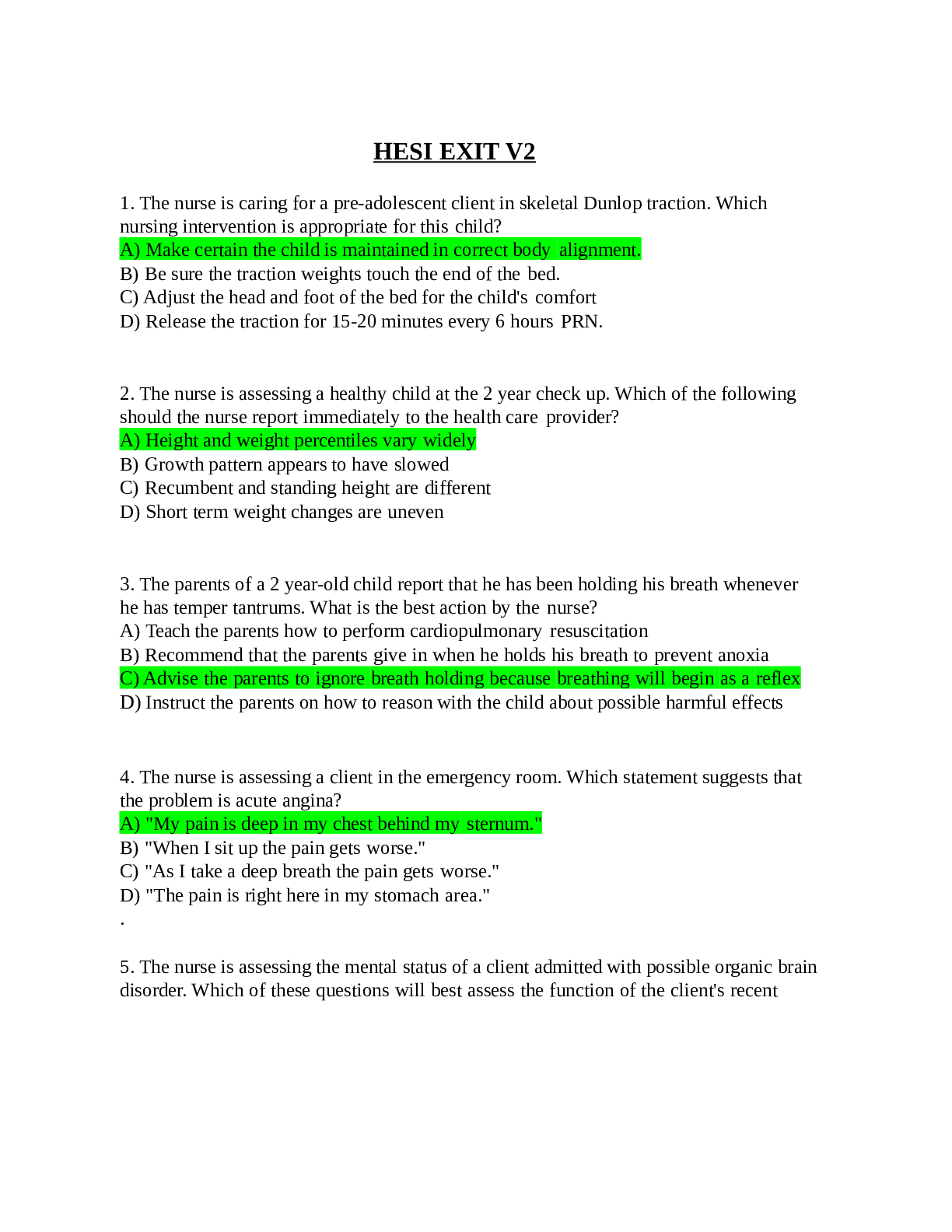
_merged.png)
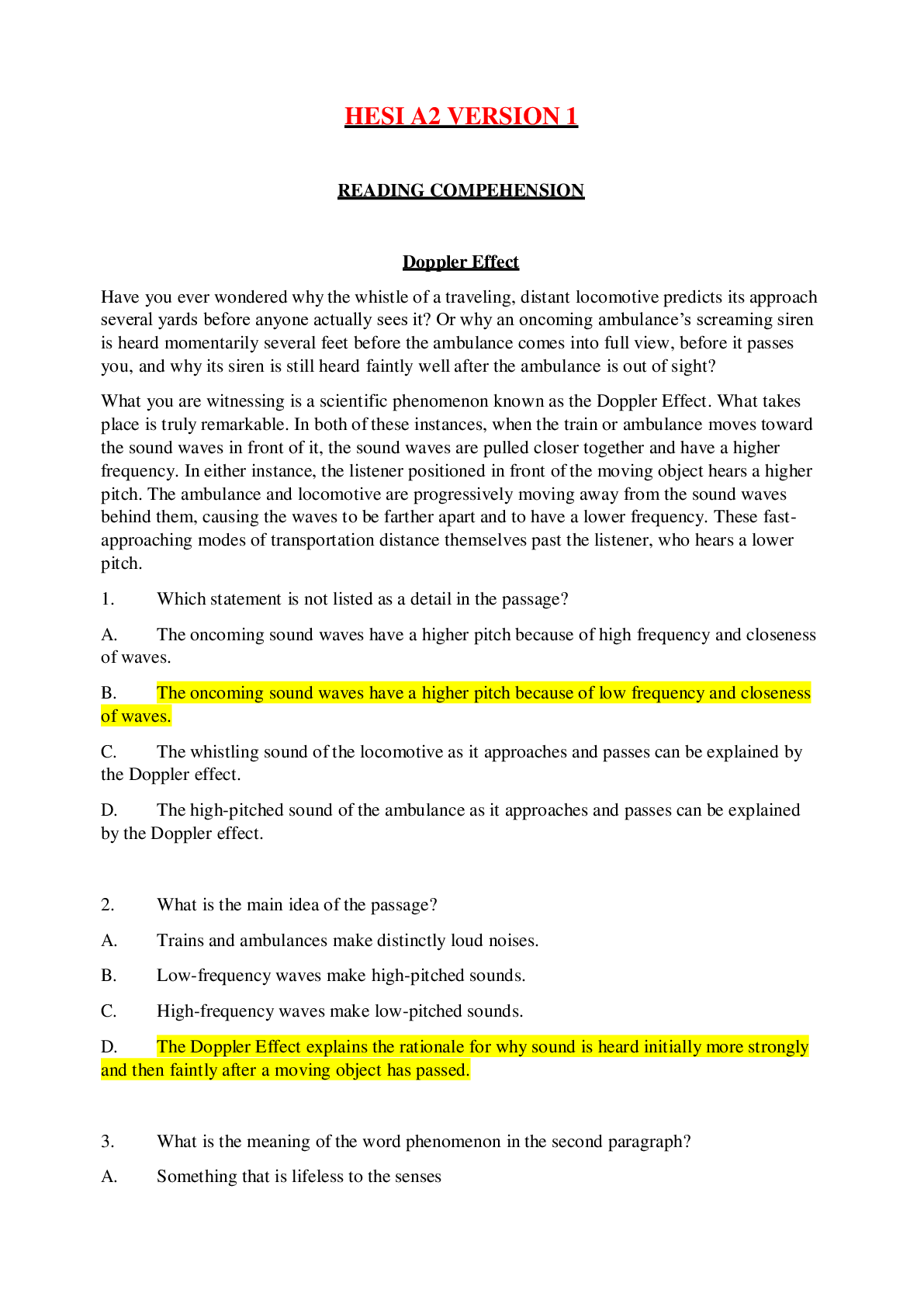
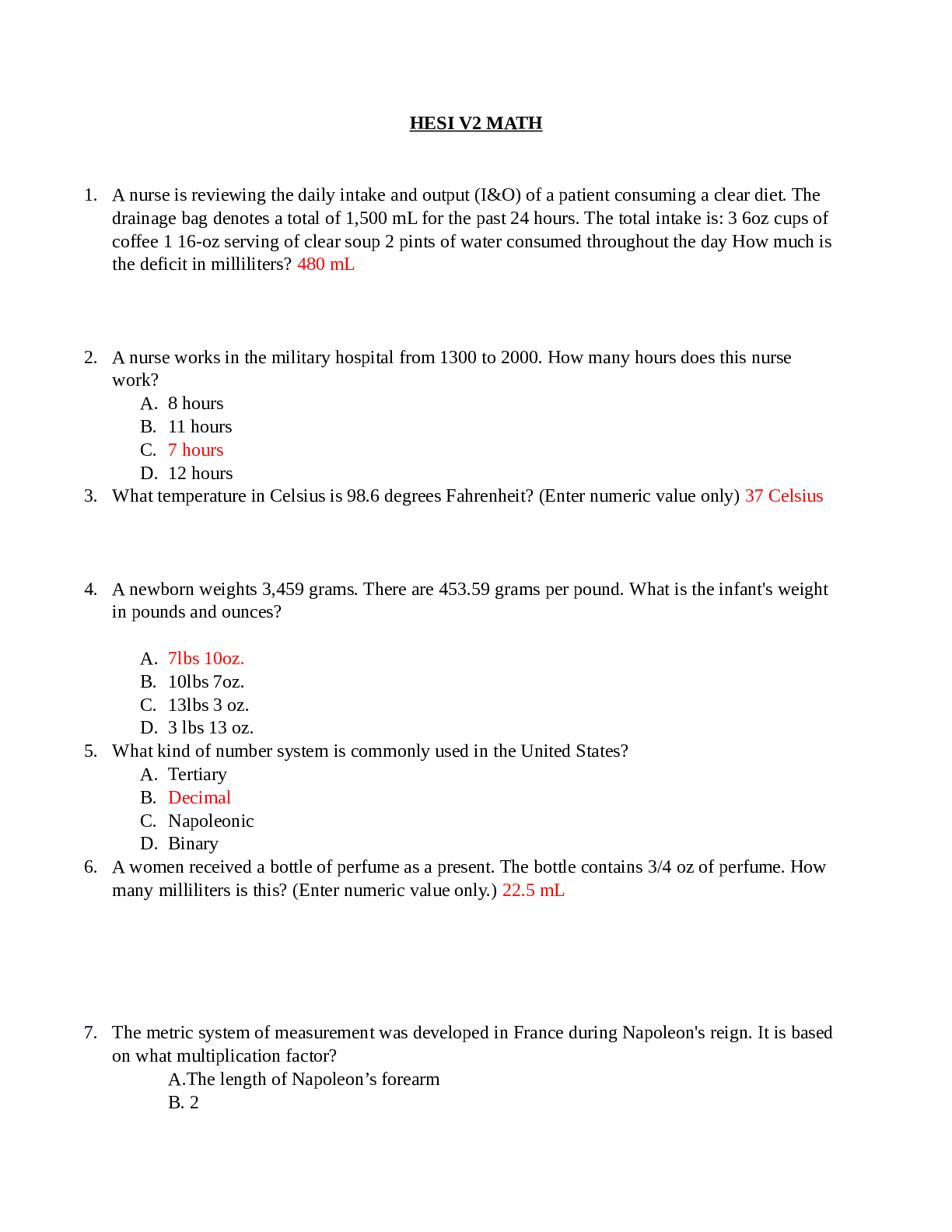
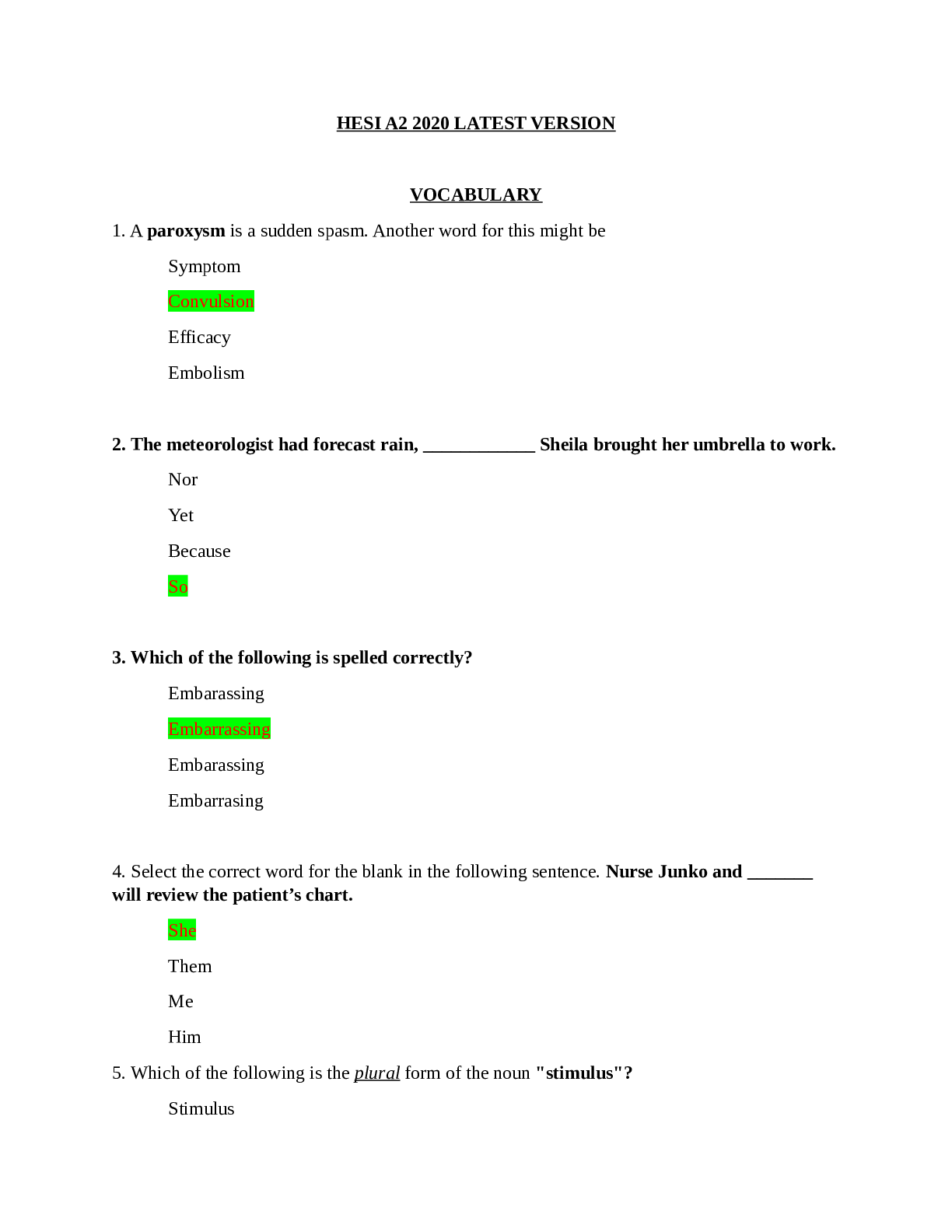





 (1).png)



